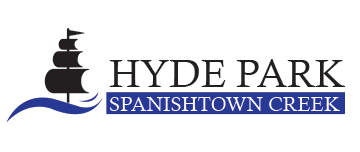History & Preservation Articles
Neighborhood History
Letter from 1848 details Tampa's damage from a major hurricane
..."At the start of September 1848, the Jackson family was living comfortably in Tampa, then a village with a population of around 200. That changed when the hurricane known as “The Great Gale of ‘48″ made landfall in Tampa Bay on Sept. 25 of that year."
...the Jackson family's first home was in the Spanishtown Creek neighborhood. (September 11, 2023, Tampa Bay Times, Paul Guzzo)
Burying our Past - Spanishtown Creek
"The first recorded non-native settlement in Tampa was at Spanishtown Creek. It was said to be inhabited by Cuban fishermen around 1783, many decades before Fort Brooke was established. Up until the establishment of Henry Plant's railway and hotel in the late 1880s this area was mainly farmland and homesteads." (post dated 2010)
Dobyville: Historian highlights forgotten African American history of Hyde Park
"It's the story of how people overcame the adversity that was entrenched in segregation” (November 2021, TampaBay Channel 10)
"Saving Dobyville: How neighbors are working to preserve Hyde Park's forgotten African American history"
"You can't talk about Hyde Park without understanding the history of Dobyville." (November 2021, TampaBay Channel 10)
"Neighbors want Tampa to Preserve Dobyville, a historic Black Neighborhood"
“This isn’t about just preserving homes,” he said. “It’s about recognizing that this neighborhood is a piece of history.” (December 2021, Tampa Bay Times)
Dobyville residents revive history of Hyde Park's historic black neighborhood"
"The Dobyville area sprung up as a working and middle class neighborhood; about 10 percent of Black families living in the Tampa area lived there in 1927. One of the remaining landmarks is the old Seybold Bakery at 420 S. Dakota Ave., which once filled the neighborhood with the delectable aroma of fresh baked bread.
“It became symbolic of the neighborhood,” Kite-Powell, who researched the area through Tampa’s 1924 City Directory, points out." (March 2022, 83Degrees Media)
[visit again for more articles and posts about the history of all or parts of the Hyde Park Spanishtown Creek neighborhood]
Learn more about Historic Preservation and designation. Below are a few articles and posts about historic designation:
10 Benefits of Establishing a Local Historic District - National Trust for Historic Preservation
Benefits of Residential Historic District Designation for Property Owners - Jonathan Mabry, Ph.D., Historic Preservation Officer, Department of Urban Planning and Design, City of Tucson
"Historic district designation has become an important tool for local governments in efforts to preserve the character of central-city neighborhoods. Designation of historic districts based on a national level of significance, called National Register Historic Districts, has occurred widely in the U.S. since the passage of the enabling legislation of the National Historic Preservation Act in 1966. In addition, some states have created state historic registers and many municipalities have established local historic registers and special zoning for local historic landmarks and districts. The number of local historic districts in the U.S. has grown from approximately 100 in 1966 to more than 2,000 in the late 1990s (Listokin et al. 1998)."
Full article available as a pdf - Benefits of Historic Designation (see below)
The Top Ten Myths About Historic Preservation by Ken Bernstein
"It often surprises me how many misunderstandings abound concerning historic
preservation–with some people closing their minds to preservation based on inaccurate
information, and others clinging to unrealistic expectations about the impacts or benefits
of preservation tools. As a starting point in clearing up these misconceptions, I offer up a
“top ten”list of the most prevalent myths about historic preservation."
Full article available as a pdf - The Top 10 Myths (see below)
Case Study: Winter Park Streetscapes A new concept in traffic calming
The idea to rebrick the city streets of Winter Park, FL—an upscale city known for its mansions, lakes and fine shops just north of Orlando—began in 1996. As engineers started work on a streetscape project to restore the main street, Park Avenue, they uncovered bricks under the asphalt that were more than 80 years old and they decided to use them as the new paving material for the street.
Full article available as a pdf - Winter Park Brick Case Study Aug 2019 (see below)
| File | Uploaded | |
|---|---|---|


